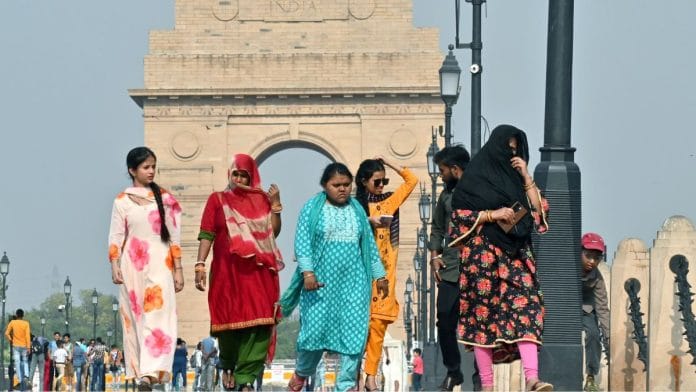New Delhi: Women experience a higher vulnerability to the impact of climate change than men, owing to both cultural and biological factors, several studies have found.
The findings indicate that both rising temperatures and poor air quality lead to women suffering a greater burden in terms of health impact and mortality. Older and pregnant women in particular have been found to suffer a greater burden of heat-related health impact.
For instance, according to a study published in Significance magazine last month (‘Are heatwaves more deadly for women?’), there has been a gradual rise in heat-related deaths among women in India since 2005. Since India lacks a high-quality national database on temperature-related health and healthcare, the researchers utilised data from the Global Burden of Disease (GBD) for mortality rates and India Meteorological Department (IMD) records for daily temperature data for the 1990-2019 period.
These findings revealed a concerning pattern. While male deaths exhibited a gradual decline with occasional spikes correlated to temperature, female mortality rates steadily increased from 2005 onwards.
Specifically, the percentage decline in mortality rates was 23.11 percent for men between 2000 and 2010, and 18.7 percent from 2010 to 2019. In contrast, women experienced an increase in mortality rates by 4.63 percent from 2000 to 2010, and by 9.84 percent from 2010 to 2019.
Previous analyses by the World Health Organization (WHO) and the American College of Obstetricians and Gynecologists in 2014 and 2016, respectively, have also shown that women are at a higher risk due to biological, political and cultural factors.
As far as air quality is concerned, women are at a higher risk of cardiovascular complications. A 2004 study titled ‘Ambient Air Pollution and Atherosclerosis in Los Angeles‘, published in the journal Environmental Health Perspectives, showed that intima media thickness of arteries in women was significantly correlated with ambient levels of PM2.5 (particulate matter), which was not the case for men.
A 2018 paper published in GeoHealth, titled ‘Climate Change and Women’s Health: Impacts and Opportunities in India’, makes the argument that over the past 20 years, there has been a 150 percent increase in what have been termed air pollution deaths.
The paper says, “[W]ithout concerted efforts to reduce GHG emissions and other sources of air pollution, safe levels of ambient pollutants will not be achieved by 2030.” In this context, women find themselves especially vulnerable to respiratory diseases and adverse reproductive outcomes.
The paper also mentions that women experience a more profound deposition of particulate matter in their lungs. Given that this lies secondary to the prevalence of anaemia among women, they are likely to be more hematologically sensitive to toxicologic influences of airborne pollution than males.
Particulate matter, more often than not, originates from the burning of biomass within the domestic sphere, where women are generally present. The use of biomass for household cooking and heating contributes significantly to human exposure to ambient air pollution, accounting for nearly 24 percent of ambient air pollution from PM2.5 in India, as found by Health Effects Institute in 2018.
Manavi Sharma is an intern with ThePrint.
(Edited by Mannat Chugh)
Also Read: 39 flamingos hit by aircraft — why their migratory journeys are becoming increasingly perilous






